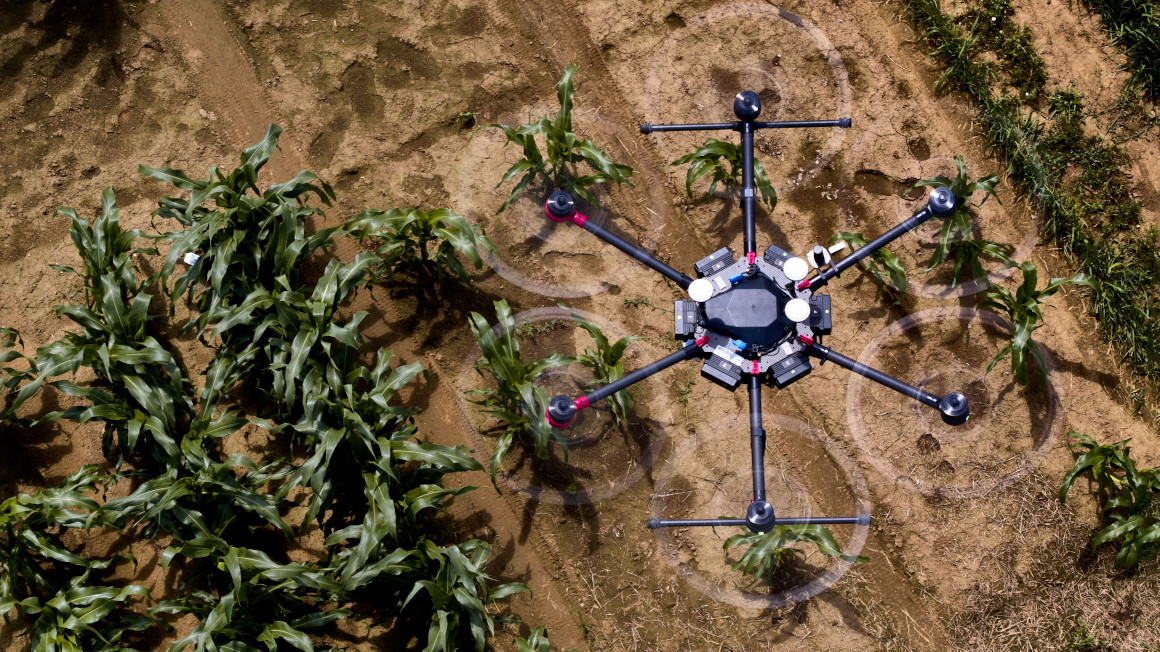AI makes the growth of arable plants visible
Researchers in Bonn have developed software that can be used to visualise the future growth of arable crops and predict important parameters such as yield.

How can agriculture become more sustainable with the help of intelligent digitalisation without sacrificing yields? Researchers at the Rheinische Friedrich-Wilhelms-Universität Bonn have been working on this question for several years as part of the PhenoRob Cluster of Excellence. With the development of software that can simulate the future growth of cultivated crops, the team is once again demonstrating the potential of digitalisation.
Algorithm supplied with drone photos from field experiments
To create the software, an adaptive algorithm was programmed with drone photos from field experiments. They contained data from plants grown under real field conditions, including cauliflower, but also plant mixtures of field beans and spring wheat, as the team reports in the scientific journal "Plant Methods".
"We took thousands of images over the course of a growing season. In this way, we documented the development of cauliflower crops under certain conditions, for example," explains junior scientist Lukas Drees from the Institute of Geodesy and Geoinformation at the University of Bonn and a member of the PhenoRob Cluster of Excellence.
Future plant growth modelled using a photo
The programme was trained using individual photos of different growth stages of the plants. According to the study, the AI "was able to generate images based on a single aerial photograph of an early growth stage, which translated the future development of the crop into a new, artificially created image".
"We also used a second AI software that can estimate various parameters from plant photos – such as the crop yield," says Drees. "This also works with the generated images. This allows us to estimate the future size of the cauliflower heads fairly accurately very early on in the growing season."
Focus on mixed cultivation
One focus of the study was the mixed cultivation of plants. Here, the team concentrated on the cultivation of field beans and spring wheat in one field. The reason: due to their different requirements, the plants are less in competition with each other – especially when it comes to nutrients. In addition, legumes are known to be able to bind nitrogen from the air and act as a natural fertiliser. "Mixtures are also less susceptible to pest infestation and other environmental influences," explains Drees. "However, how well the whole thing works depends very much on the combined species and their mixing ratio."
According to the researchers, AI could also be helpful here. Based on data on mixing ratios, recommendations could be derived as to which plants harmonise particularly well in which ratio.
Computer programme as a recommendation tool
In the future, the Bonn researchers' AI-based software will be a decision-making aid for farmers. The computer programme should then be able to estimate, for example, how the use of pesticides or fertilisers will affect the crop yield. The accuracy of the AI-based prediction is still only good if the growing conditions are similar to those that prevailed when the training photos were taken, the researchers write. In the future, however, the software should also take into account weather changes such as cold spells or continuous rainfall in order to make accurate growth forecasts.
The current study was carried out jointly with the Jülich Research Centre.
Bonn researchers from the PhenoRob Cluster of Excellence published a position paper in the spring of this year with questions that need to be addressed as a priority in the future with regard to intelligent digitalisation in agriculture. The large-scale project at the University of Bonn has been funded by the German Research Foundation (DFG), the German Council of Science and Humanities and the Joint Science Conference (GWK) for seven years with up to 10 million euros per year since January 2019 as part of the "Excellence Strategy of the Federal Government and the Federal States". The aim is to drive forward the intelligent digitalisation of agriculture in order to make farming more environmentally friendly without compromising crop yields.
bb


